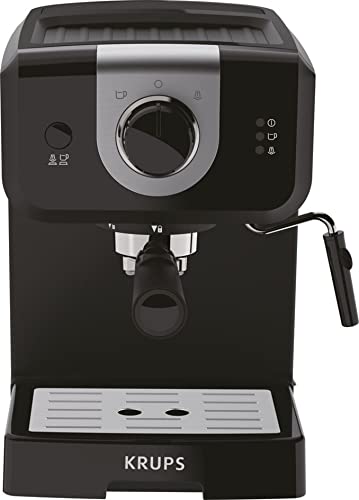How to Make Espresso Machine Coffee
An espresso machine can make an excellent cup of coffee, but it takes some additional installation and maintenance than a regular drip coffee maker. It also requires you to grind and tap your own beans.
Pressure is the main ingredient in making espresso. Here's how an espresso maker works: a heating vessel heats water to the ideal temperature before forcing it through the grounds and out the spouts.
Temperature
Espresso is produced by pushing hot water, under pressure, through finely ground coffee beans. The temperature of water is essential to the final shot. Insufficient temperatures can result in the an under extraction of essential flavor compounds. High temperatures produce over extraction and can lead to burning or bitter taste.
The ideal temperature range for espresso is 195 to 205 degrees F. This temperature can be achieved by using a grouphead that is designed to ensure a constant temperature and stability throughout the brewing process. The most popular kind of group head is the E61 that offers an array of temperature stability with pre-infusion and lever control.
It is crucial to consider the temperature when you adjust your espresso machine for different roasts or brew ratios. This will impact the extraction yield as well as the crema. The optimal temperature will be contingent on the particular roast and bean but the general rule is that lighter roasts and higher ratios of brew require higher temperatures than darker roasts and lower brew ratios. A good thermocouple is essential for maintaining the temperature at a constant level.
Pressure
During the brewing procedure, espresso machine coffee is pushed through finely ground coffee grounds that have been put through a tamper. This triggers chemical reactions which extract flavors oils, flavors and other soluble elements from the beans. The resultant beverage is usually more flavorful and richer.
The ideal espresso machine's pressure is nine bars of pressure, which is equal to the atmospheric pressure at sea level. This is due to the fact that it's at this level that the soluble compounds in espresso beans are most easily extracted.
However, some espresso machines may advertise 15 or 20 bars of pressure. While these machines are able to achieve these levels of pressure however, they may not be in a position to maintain the same pressure throughout the extraction.
To put that in perspective To put it in perspective, one bar of pressure is equivalent to 32 pounds per square inch, or PSI, of a car tire. This is more than four times the pressure that a professional cyclist utilizes to fill their bike tires. The ability to control espresso machine pressure and create consistent espressos is crucial for any serious home barista.
Water

Water is the most important ingredient in a great cup of espresso. The correct water will allow your beans to reach their full potential, while the wrong water can lead to issues like clogged pipes, or even harm your expensive espresso machine.
The best option is natural spring water that is rich in minerals to ensure optimum espresso extraction. This water will enhance the taste of your espresso without the chalky mineral trace that is found in tap water or bottled waters. This is an excellent alternative to reverse osmosis. It can be too filtered and cause flavor problems.
You should not use a water filtration system that removes excessive amounts of mineral content from the water you drink. This can lead to flavor and extraction issues. Buy a water testing kit to determine the average hardness of your local water. This can then be used to determine the best filtration system to provide you with the right water requirements for your espresso machine.
Beans
The majority of coffee enthusiasts tend to be involved throughout the process of making espresso. They obsess about a number variables, like temperature, pressure of water and viscosity. If one variable is not functioning properly it could make the entire drink taste bad.
The beans used are the most important element when it comes to espresso. Many people believe that only certain types are suitable for espresso. While some beans are suitable for certain uses but any coffee bean can be used to make espresso. The main difference between espresso beans and regular coffee beans is that espresso beans are roast for longer, tipycally past the second crack that gives them their darker appearance and makes them more water-soluble.
Medium or dark roasted beans are the best choice for espresso, since they give the shots a richness and a boldness. Light roasted beans can also be used to make fantastic espresso, particularly when they're pre-ground for convenience in an espresso maker.
Milk
Espresso and milk is a classic combination. The coffee doesn't just increase energy levels, but the steaming milk helps balance the bitterness of espresso and also adds a wonderful creaminess. This is among the most delicious culinary pairings!
When selecting an espresso maker capable of making latte, or a cappuccino as well, you should consider how easy it will be to use. A lot of the top machines come with a jug that can be used for hot or cold coffee and steam wand. espresso machine uk Coffeee UK come with an espresso portafilter that can be used to make the shot. Certain models have an integrated grinder, tamper, or frother.
The steam wand must be purged before using it for the first time each day (or after every cup of espresso) to eliminate any condensed water. The process takes only 30 seconds, but it is vital to ensure that your machine stays running smoothly. Failure to cleanse could result in a bitter taste or build-up of bacteria that can affect the flavor and aroma of your drinks. It's not difficult to do and should be part of your regular maintenance schedule.
